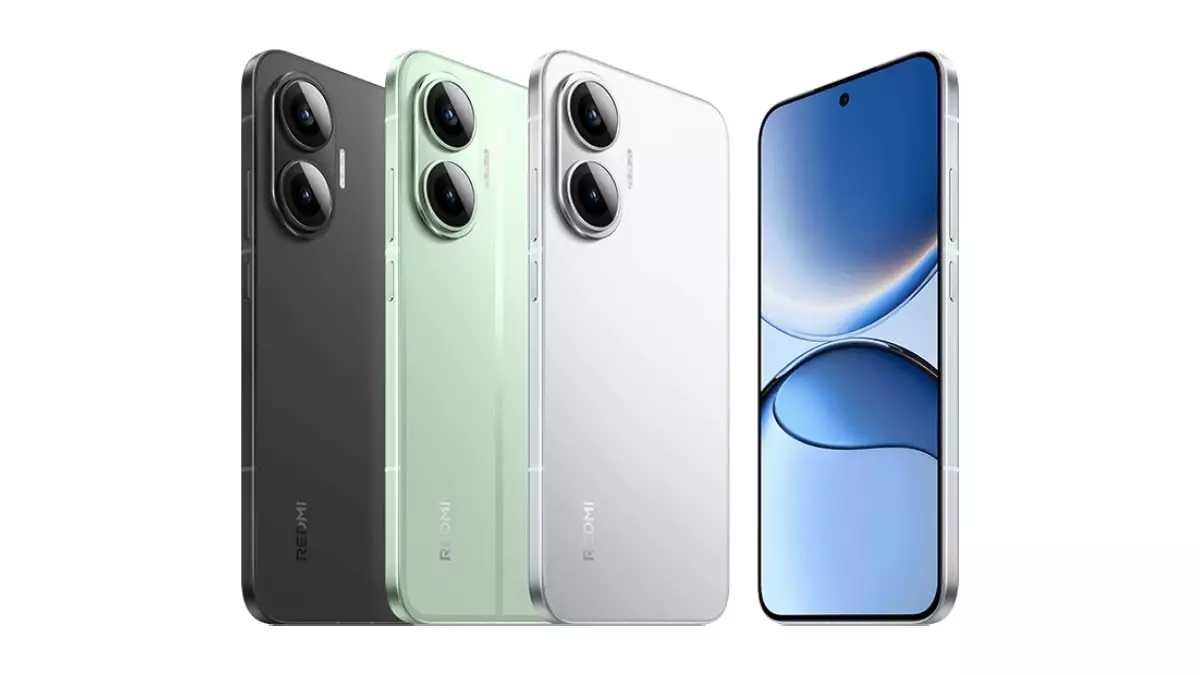The unveiling of the Redmi Turbo 4 Pro in China has sparked discussions within tech communities, particularly concerning the balance between innovation and market saturation. Xiaomi’s latest smartphone iteration packs impressive specifications, but one must ask: does it genuinely push boundaries, or is it yet another offering in an already flooded market?
Specifications and User Experience: A Double-Edged Sword
Equipped with Qualcomm’s octa-core Snapdragon 8s Gen 4 processor, the Turbo 4 Pro is optimized for performance, raising expectations for multitasking and gaming experiences. With a staggering 16GB of RAM and multiple storage configurations reaching up to 1TB, it promises capability. However, one has to critically question the necessity of such extremes. In used everyday scenarios, can the average smartphone user truly leverage this excess? The phone also boasts a 50-megapixel dual-camera setup, which injects value, but how many users actually manipulate such high-quality imagery in their daily lives?
When it comes to the display, the 6.83-inch 1.5K OLED screen shines brightly with up to 3,200 nits peak brightness, yet the constant push for higher specs can feel excessive. The tech world has reached a point where the qualitative improvement in user experience is becoming increasingly marginal. While it’s commendable that the Turbo 4 Pro can support 120Hz refresh rates and Dolby Vision, it raises an eyebrow—are we truly seeing innovation or simply the natural evolution of diminishing returns?
Battery and Charging: Fast but Sustainable?
The 7,550mAh battery that supports 90W fast charging might be a highlight, but at what environmental cost? In a time where sustainability should be at the forefront, rapid charging technology and larger batteries raise significant concerns about energy consumption and material waste. Although 22.5W reverse charging can be seen as a convenient feature, does it add to the device’s ecological footprint? Xiaomi’s commitment to high-performance technology must evolve alongside responsible production and consumption practices.
Design and Aesthetics: A Safe Haven or a Missed Opportunity?
The “soft mist glass” finish is aesthetically pleasing, providing a luxurious feel. However, it aligns well with industry standards without significantly deviating from conventional designs. In an era where brand identities are shaped by distinct aesthetics, sticking to what is comfortable feels safe but uninspired. Add to this the new Harry Potter Edition, and one sees an inclination towards gimmicks rather than genuine innovation—an area where the tech industry often stumbles.
Market Implications: The Cost of Overindulgence
Starting from CNY 2,199 and climbing into premium contentions, the Redmi Turbo 4 Pro enters a competitive landscape saturated with high-specification devices at various price points. The strategy of flooding the market with variants might be a short-term sales approach, but it risks creating consumer fatigue and confusion. A focused line-up that aims for quality over quantity could foster brand loyalty and trust, but with Xiaomi’s latest move, there’s a danger it could breed brand cynicism instead.
In examining the Redmi Turbo 4 Pro, we find ourselves at a crossroads. While it showcases considerable advancements in technology, one cannot ignore the essential question—does it represent a true evolution in mobile devices, or is it just another polished iteration veiled as innovation? The answer lies in how users choose to engage with it, and more critically, how the industry decides to innovate going forward.

